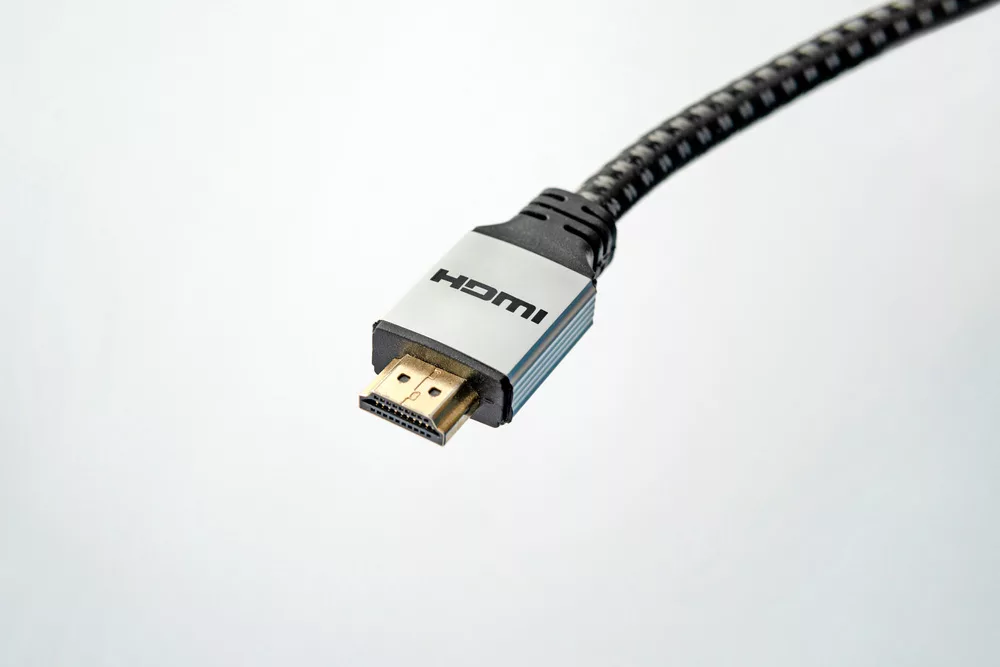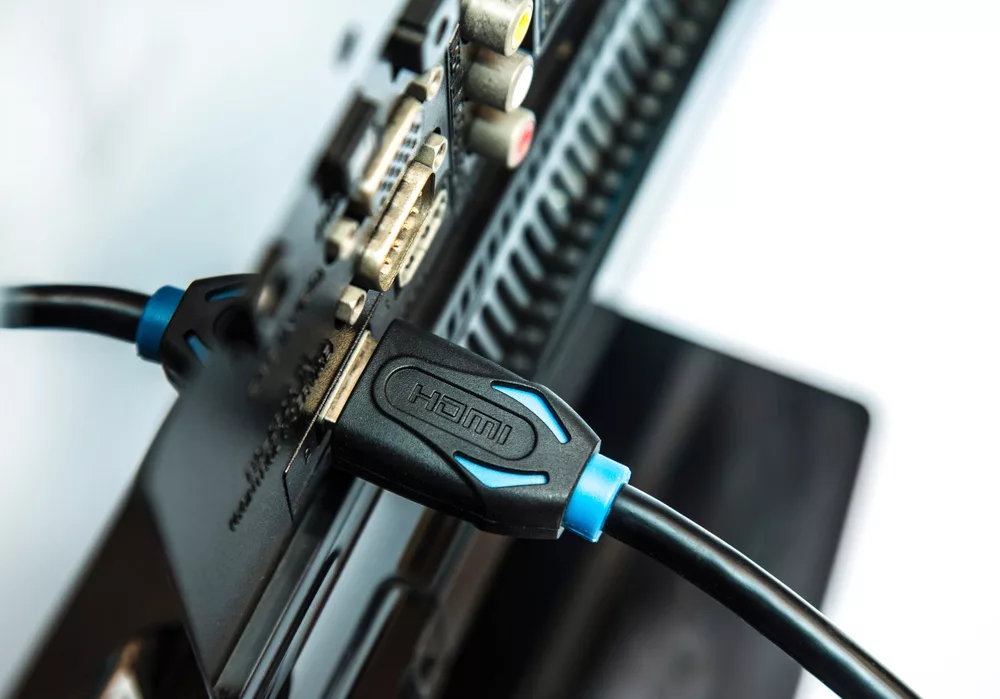How to fix HDMI cables? In media houses, HDMI cables are the main cables to transfer HD digital videos and audio. These cables are essential audio-visual devices for residential, commercial, and educational settings.
However, like everything else, HDMI cables also deteriorate or damage over time due to constant use.
So, if an HDMI cable gets damaged once, is it useless? Absolutely not!
You can always either replace or repair your faulty HDMI cables. This article will explain our options to mend damaged or faulty HDMI cables.
Table of Contents
- Does an HDMI cable go bad or not?
- How do you know if your HDMI cable is bad?
- How to repair HDMI cables?
- Conclusion:
Does an HDMI cable go bad or not?
High-quality HDMI cables do not go bad if you treat them nicely. Why is it so? Let’s find out.
- HDMI cables are generally not exposed to harmful elements, corrosive substances, or excessive wear and tear. You mostly route these cables behind the TV, around the carpet edge, or into the walls. So, there is a lesser probability of HDMI cables going bad anytime soon.
- Mostly, HDMI cables are highly durable owing to their efficient design. All the copper wires in HDMI cables have individual insulation and a foil shield wrapped around each. All the inner wires are further wrapped in outer protective braided shielding. And the outermost layer is a flexible plastic sheet which you see.
- Even the connectors in HDMI cables also can’t go bad easily, as some of them have gold plating, which prevents them from corrosion.
Conclusively, we can say that HDMI cables don’t go bad easily.
However, they still need replacement over time as sometimes fierce force tears the cable or damages the internal wires.
Also, some cables wear and tear due to external conditions leading to ineffective soldering, loose wires, or detached header.

High-quality gold-plated HDMI cables
How do you know if your HDMI cable is bad?
You can easily notice when your HDMI cable is going bad. Here are some signs and symptoms:
- Sparkling images/shooting stars in the images
- Disconnection errors at frequent intervals
- Degraded image quality
- Blurry picture
- Intermittent or no picture
- intermittent or no sound
- Pictures with weird colors
- Remote stop working
- Finally, if your cable stops working entirely, it is damaged
Troubleshoot the problems:
If you encounter any of these issues, the problem might be a cable, device, or connection. How to troubleshoot the problem?
- First, turn off everything, remove the HDMI cable from the port, and examine its connector pins.
- If you do not find any bent or broken pins, inspect the HDMI port of the device. Ensure that your cable fits in the port snugly. A loose connection can also result in any of the above issues.
- If the fit looks fine, try to plug the HDMI cable into a different port. Turn On everything and check if this new port is working. If the picture is clear, the problem was with the port.
- However, if it doesn’t work well either, check if your cable is bent or coiled. Unfurl the cable. If you do not need extra length, try getting a shorter cable.
- If the problem persists even after uncoiling the cable, try using a different cable. Some TVs and DVDs can be connected through separate component cables for audio and video connection. If component cables work, the problem is not with the devices. So, get a different HDMI cable, as some cables work with one device and not the other.
- Also, ensure that all your system’s software is up-to-date. Sometimes, if some updates are due, they may create problems in the smooth functioning of the device. Suppose you have connected a low-quality HDMI cable to an updated display technology such as 4K HDR. It will indeed affect the image quality. When any new technology comes up, it requires you to upgrade all your devices accordingly.
- If all your systems are up-to-date, turn off the systems and turn them back on. While turning it on, try changing the switching sequence on the devices.

An HDMI cable input on a tv
How to repair HDMI cables?
Once you are sure the problem is with the HDMI cables, then it is time for you to buy a new HDMI cable or repair the one that is going bad.
If you can’t identify any external damage, it is probably possible that the inner copper wires are damaged or loose, or the soldering has worn off.
You can repair HDMI cables if the damage is confined to connectors and the cable ends.
You will need a few tools and replace the damaged HDMI connector with a new one.
However, if there is damage to the internal wiring or the circuit board, you must buy a new cable.
Steps to fix your HDMI cable:
Tools you need:
- Soldering iron (25 watt)
- Solder
- Desolder wire
- HDMI connector
- Cable ties
- Scissors
- Extra power cables
- Multimeter
- Crocodile clamp assist
- HDMI to HDMI connector (optional)
- Second HDMI cable (optional)
- Aluminum (optional)
Wiring it all:
First, you must understand the internal wiring/ inside of an HDMI cable.
As all internal connections of the HDMI cable are the same, the pin layout is straight; i.e., pin 1 goes in 1, pin 2 goes in 2, and so on.
But it is difficult to identify which wire comes from which pin once you cut the cable. You can use a multimeter for it.
Connect the multimeter to the HDMI connector end, which is working fine, and connect the other end to each wire.
When you pick the correct wire, it will show no resistance, and, in this way, you can identify which wire comes from which pin.
Some may recommend using a wiring diagram, but that is not as effective as this one.
Start:
Now, remove the cable insulation for up to 2 cm and separate the wires; you will see four twisted pairs with foil shielding.
These are data wires for carrying audio and video signals. Then there are a few other colorful wires for display detection, power, clock speed, etc.
Now, start stripping the metal shields of the twisted pairs to expose the wires; you have to remove the insulation of all wires to expose them up to 3 cm. You can use scissors for it.
Once the wires are exposed, line the wires to the connector. You already know which wire to put where through the multimeter method mentioned above.
Here you can use a crocodile clamp to keep them in place.
Soldering:
Once you put wires in place, start soldering them using a soldering iron. Always move either from left to right or from right to left direction.
You may accumulate solder like a big lump if you don’t follow this.
Complete the step carefully so you solder all the wires leaving no wire in between.
Some extra precautions:
Once you have connected everything and are ready to start afresh, you must do something for cable strain relief.
All 15 delicate wires cannot hold the cable, and sometimes, connections become loose. You can use ties and aluminum strips to keep things together.
For extra precautions, get an HDMI-to-HDMI connector and an HDMI cable with you as an option so that you can replace the cable as and when required.
After completing and considering everything, recheck all the connections to ensure no wires are wrongly connected, as otherwise, and it may damage your display ports.
Conclusion:
HDMI cables are indeed solid and durable, but at the same time, if you expose them to harsh environmental conditions, they will surely get damaged with time.
You will never want bad audio and video quality from a faulty wire or connector.
Look for the signals your display device and cable are giving you. If there is no signal and nothing still works, don’t worry; you can easily repair your HDMI cables with the help of the above guidelines.
After all, if you still fail to get a quality picture, you must invest in a new HDMI cable.
Don’t worry; Cloom has multiple options for you.
You can get all HDMI cable standards with customized options. Please get in touch with us for more information.
